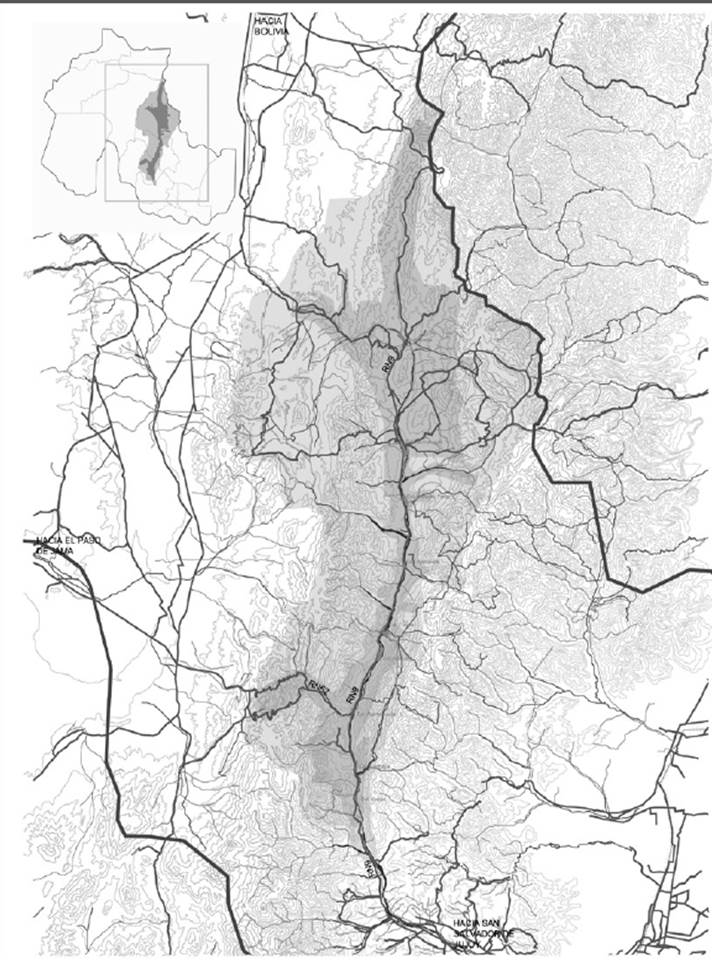Abstract
In order to understand the transformation processes of the Cultural Landscape Humahuaca Gorge (Jujuy, Argentina)before and after the UNESCO declaration (2003), this work essays the redraw and construction of new cartographies asan instrument of territory knowledge. Deliberate reading of the territory, from different scales of observation and layersof information, allows us to delve into the structuring elements and patterns of change: asymmetry in topography andwater courses configuration, transversality of communication axes, transformation of existing urban fabric and recenturban growth of towns and allotments, as well as evolution in the assessment of heritage resources and tourist sites.Finally, the discussion focus on some areas and renewed proposal topics arising from the cartographic analysis, andthat pose questions about territory limits; the understanding of the gorge as a cultural route and the enhancement ofcertain cross subsystems; as well as the recent patterns of discontinuous growth in new neighborhoods or allotments.Apuntes is registered under a Creative Commons Attribution 4.0 International Public License. Thus, this work may be reproduced, distributed, and publicly shared in digital format, as long as the names of the authors and Pontificia Universidad Javeriana are acknowledged. Others are allowed to quote, adapt, transform, auto-archive, republish, and create based on this material, for any purpose (even commercial ones), provided the authorship is duly acknowledged, a link to the original work is provided, and it is specified if changes have been made. Pontificia Universidad Javeriana does not hold the rights of published works and the authors are solely responsible for the contents of their works; they keep the moral, intellectual, privacy, and publicity rights.
Approving the intervention of the work (review, copy-editing, translation, layout) and the following outreach, are granted through an use license and not through an assignment of rights. This means the journal and Pontificia Universidad Javeriana cannot be held responsible for any ethical malpractice by the authors. As a consequence of the protection granted by the use license, the journal is not required to publish recantations or modify information already published, unless the errata stems from the editorial management process. Publishing contents in this journal does not generate royalties for contributors.


